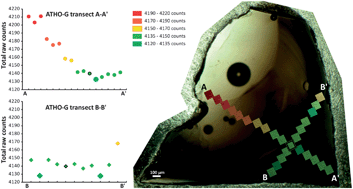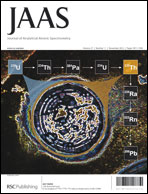There is a 2–3 order of magnitude difference between the chlorine concentrations of seawater and the magmas making up the oceanic crust. For this reason, chlorine is a key element for tracing present and past water–rock interactions. In order to trace processes such as assimilation of hydrothermally altered oceanic crust by mid-ocean ridge magmas, a high precision method with low detection limits is required, since conventional methods are not able to reveal variations in the intrinsically low chlorine content of these basalts. We present a new method to measure chlorine in basaltic glass by electron microprobe, using a combination of mapping and standard-sample bracketing techniques. Due to the high environmental background of chlorine, special emphasis is put on the influence of different preparation and cleaning procedures, as well as other possible effects on the measurements (e.g. sample size). Calibration of the method is performed by informational values of international standards and by minerals with a fixed chlorine content. Finally, new information on chlorine concentration values for commonly used standard reference materials (SRM) is provided. With this new method chlorine can be measured at very low detection limits (10's of ppm's) with a precision of 1–2 ppm standard deviation for low chlorine concentrations.

You have access to this article
 Please wait while we load your content...
Something went wrong. Try again?
Please wait while we load your content...
Something went wrong. Try again?


 Please wait while we load your content...
Please wait while we load your content...